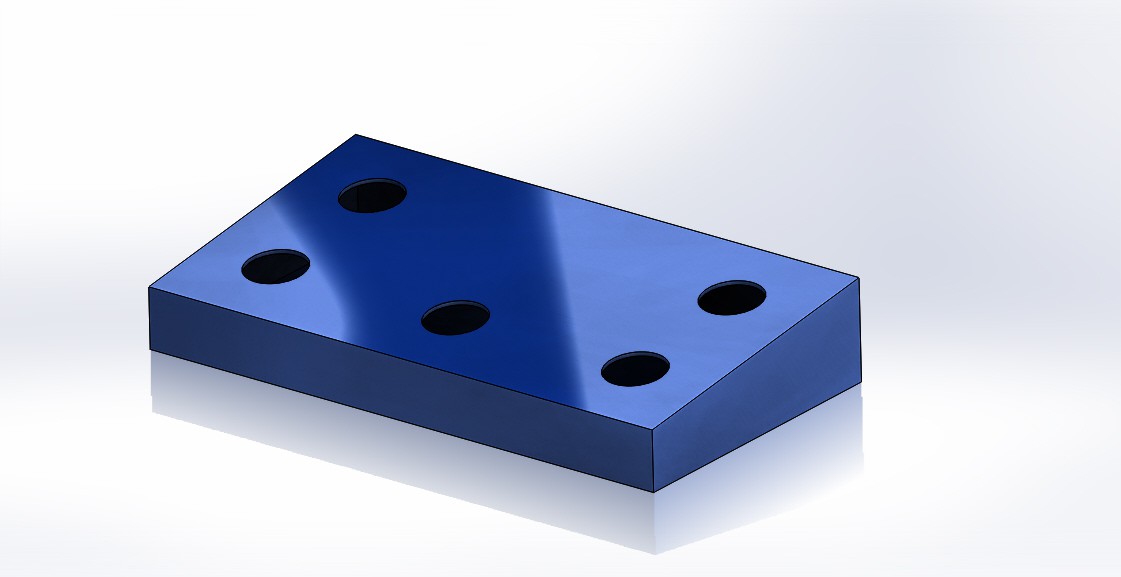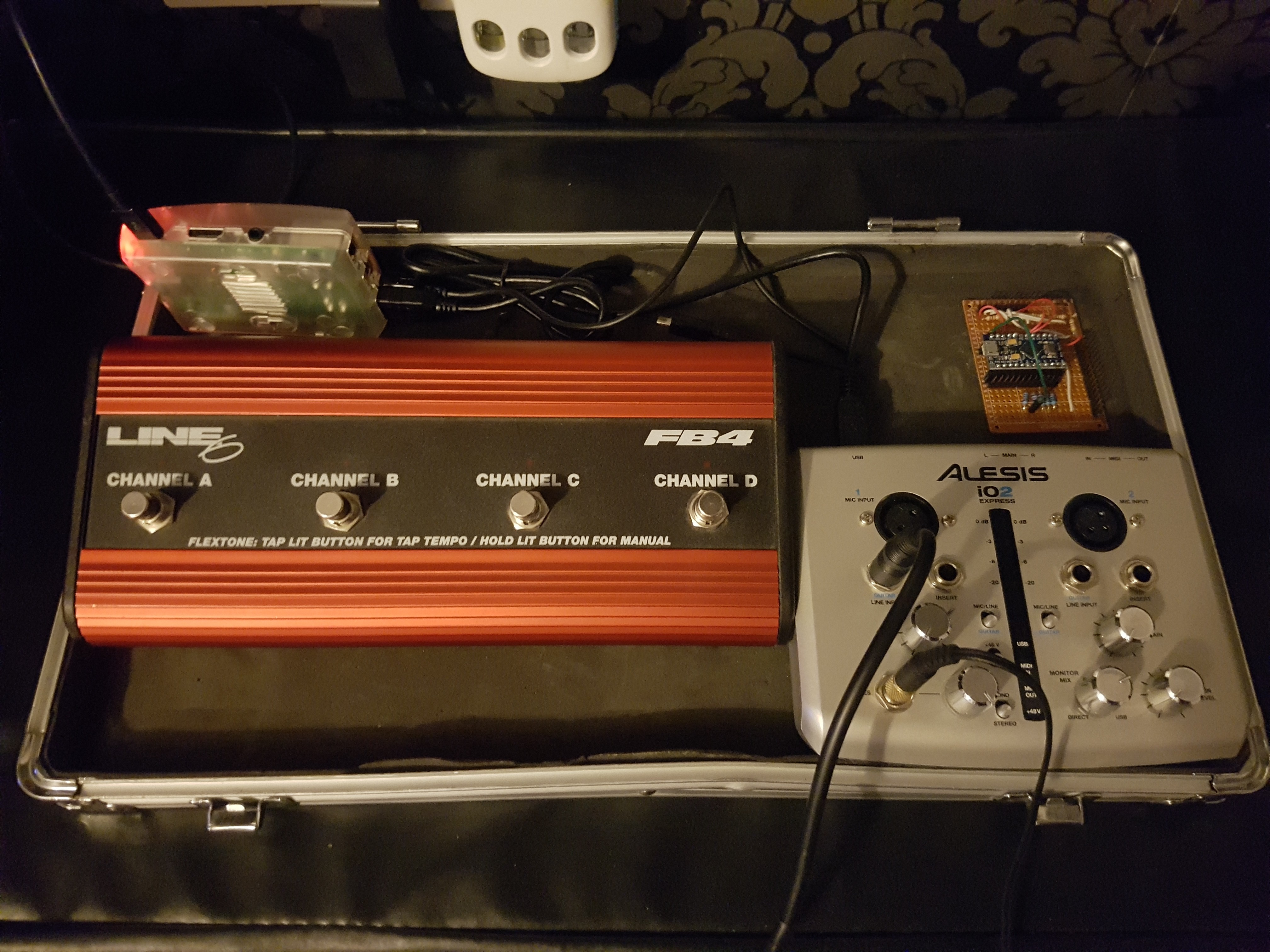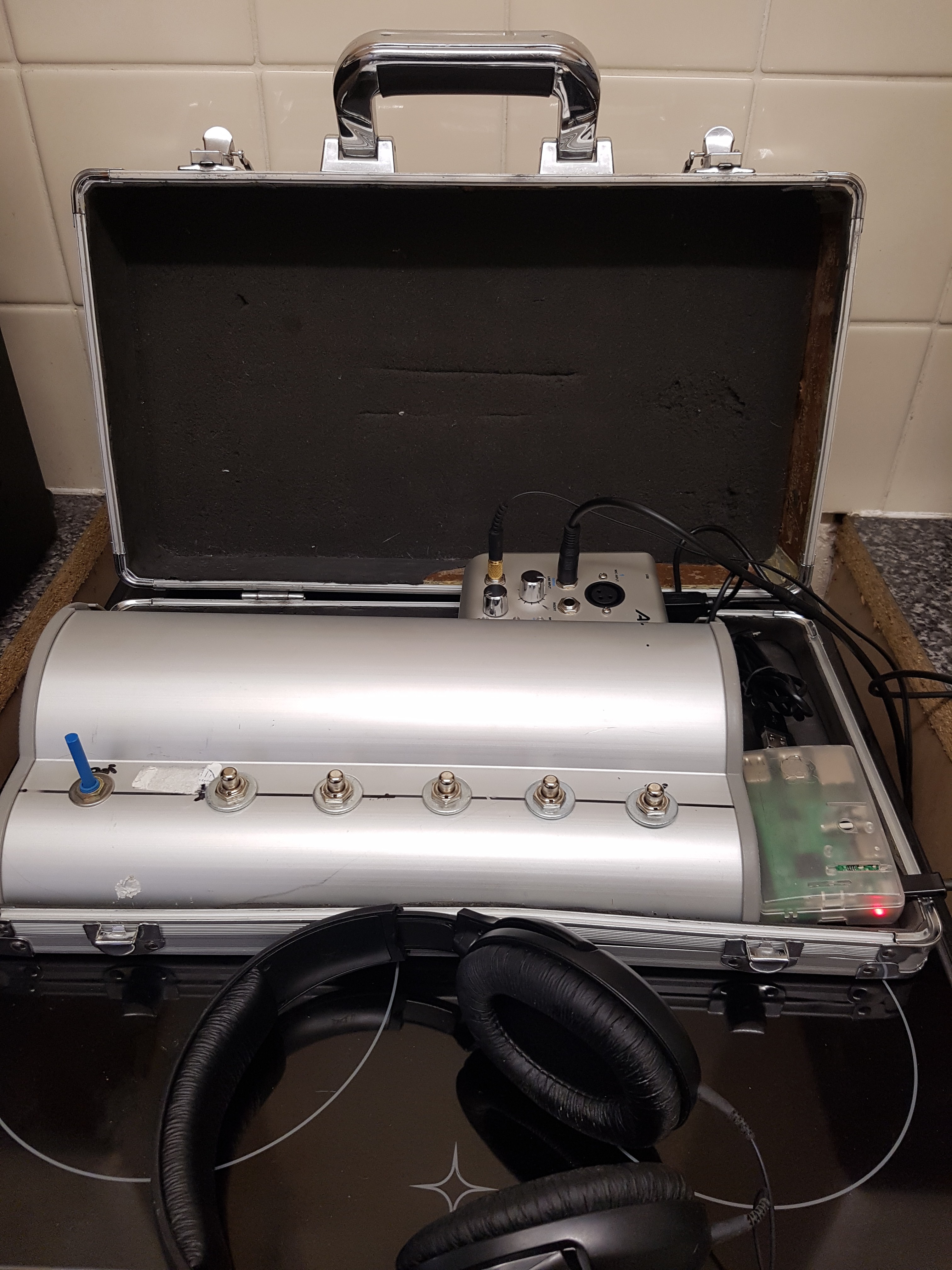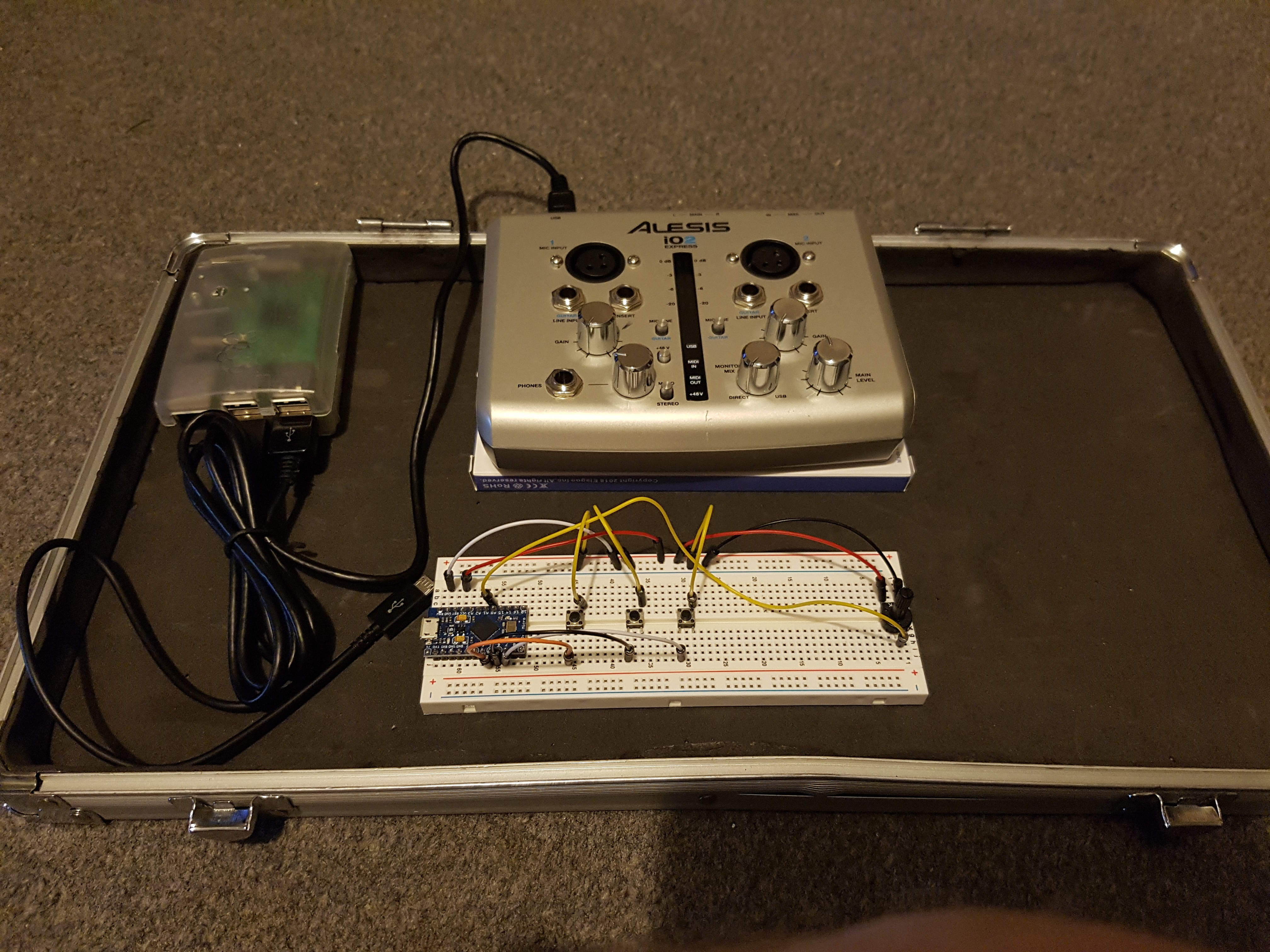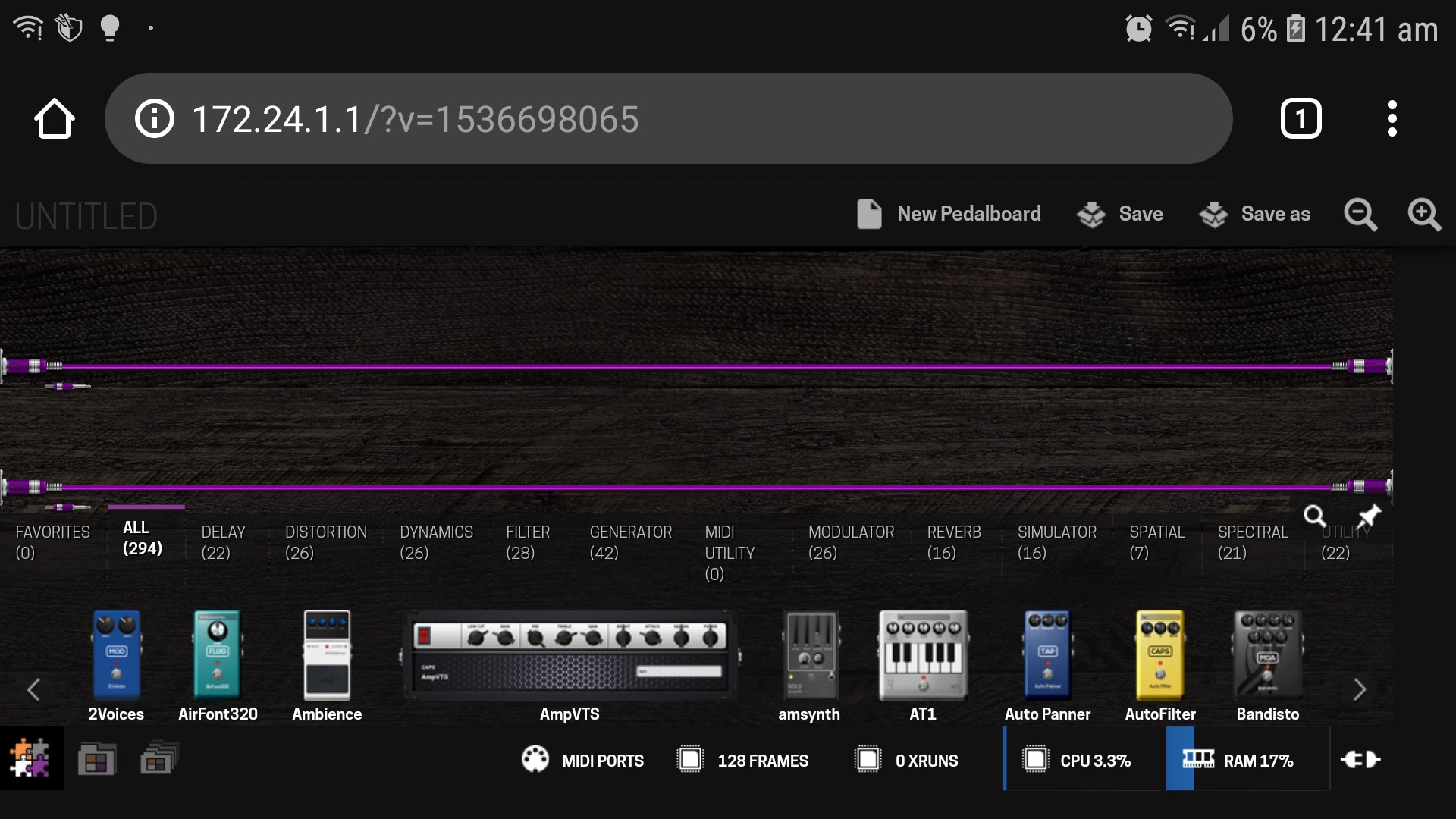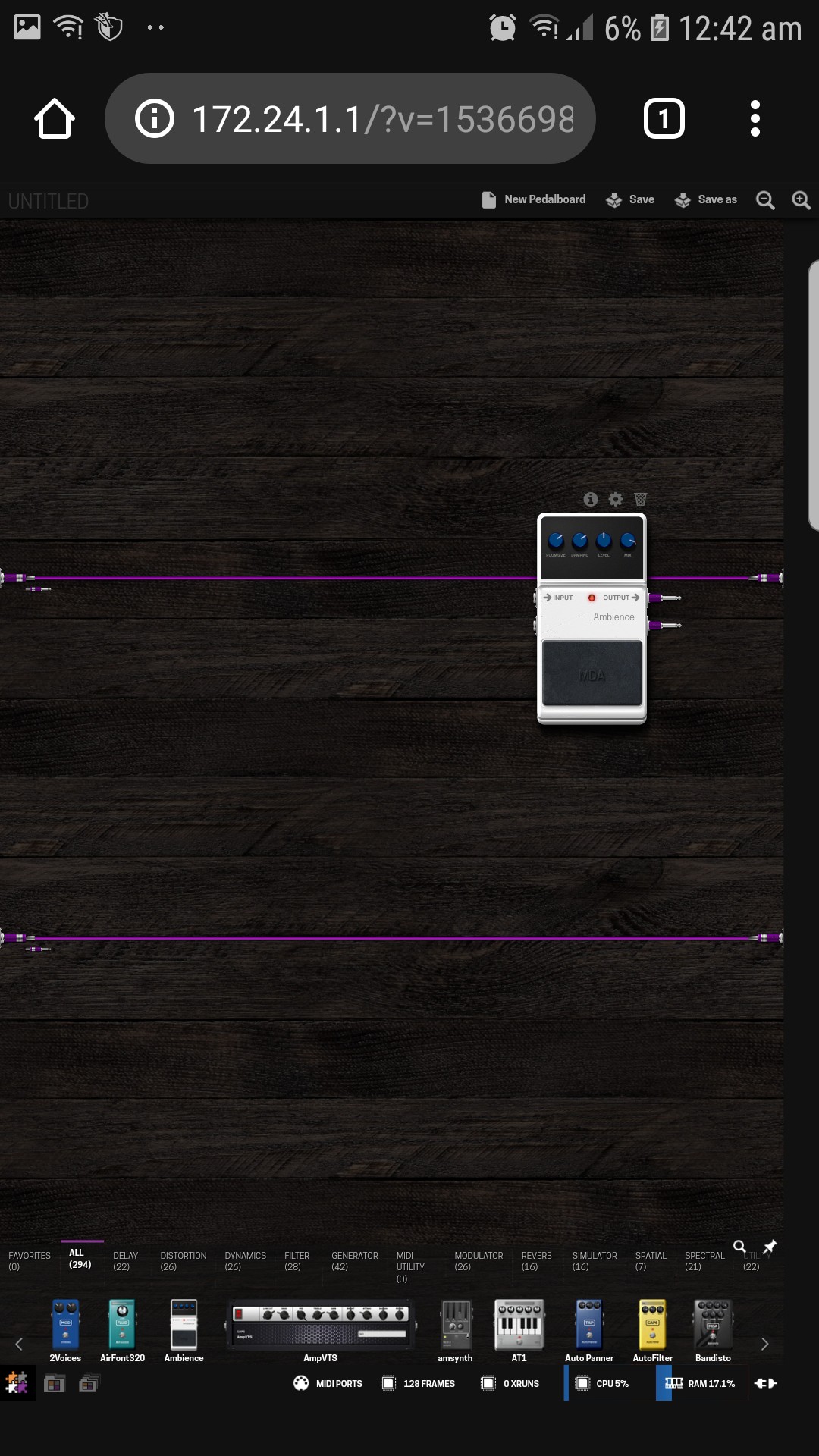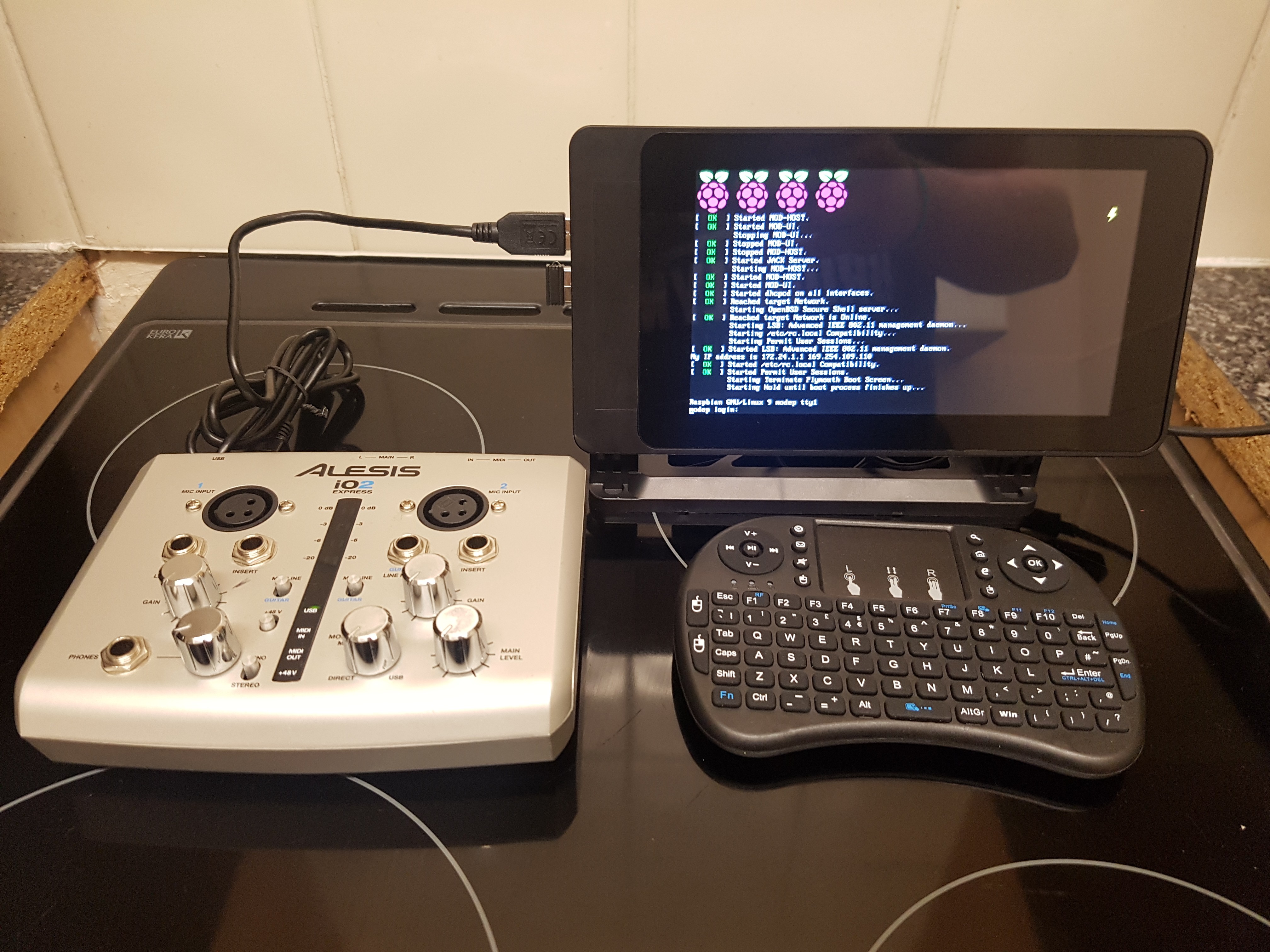-
Enclosure v1
03/11/2019 at 01:03 • 0 commentsHere is the first iteration of my case:
Tomorrow I will get this cut out at work and stick together; I have added a cut out for the Pi ports on the back, but will need to drill out the sockets for the xlr/Jack inputs x2 and the jack sockets out x2 and a headphone jack out.
The analog expander chips I have ordered won't work with the Pi (I need an analog pin to expand of course) so a new chop will need to be ordered.
Not to worry though, as my expander chips will be getting put to use with an Arduino Pro Micro to make a simple electronic drum brain.
-
Finally, a build update
03/01/2019 at 01:27 • 0 commentsSorry for the long delay between updates folks.
Build update :- I am currently working on building a little enclosure to house my Pi and the 5 switches. I have a few analog expander chips on the way, which I will use to add a potentiometer to my inputs to simulate an expression pedal.
Today i have also ordered an audioinjector soundcard for my Pi:
https://shop.audioinjector.net/detail/Sound_Cards/Original+Pi+Sound+Card
I really wanted to make my pedal all inclusive, and plugging in a USB interface to handle audio, well, it sucked.
This soundcard will go onto my Pi, connects via SPI (leaving all my gpio pins used fornbutton handling completely free for that job) and is already supported in the Linux kernel so it shouldn't take a while lot of work to have it working with JACK.
I'm feeling good about this build ; once my parts arrive Ibshould be able to finally build it, and for once it'll actually match what I had in my head when I first set out to build it.
-
It's alive!
02/18/2019 at 01:56 • 0 commentsIt's 1:55am, but I finally have some good progress to report!
I've managed to get a few buttons connected directly to the Pi to pass MIDI instructions to the MODEP software.
This is handled by a Python script on startup, opening a virtual MIDI port for the script to send commands.
It works great with the software, and it's really easy to set up a control to be handled by the physical buttons.
I've also tweaked the Jack server running on the device, reducing the issues ideas having with sound quality dramatically.
Next step is to add a few more buttons and an encoder or two into the script, and prepare for an analog expander chip that's on its way. This will read potentiometer values from expression pedals.
I also want to build a nice case to put this in too :)
Woohoo!
-
Progress
01/29/2019 at 23:35 • 0 commentsIt's been a while, but I have finally got around to doing a little more on this project.
Hardware - I have decided to switch out my footswitch for an off the shelf Line6 FB4. It looks smarter, is smaller, and will be more reliable in the long run.
Tomorrow I will solder up an Ethernet breakout cable to allow me to use the FB4 with the Arduino Pro Micro.
![]()
Software - I did a bit of tweaking to the jack config, and it already seems a whole lot more reliable!
Woohoo!
-
Hmmm... Noisy
12/04/2018 at 21:17 • 0 commentsI got to give my board a go today and had mixed results.
The board worked, however there appeared to be a lot of digital noise in my headphones.
I'm going to do some trouble shooting and see if I can isolate the problem, as it could be an issue with my interface.
The footswitch is an old project that I'm hoping to use as a stopgap while testing my board. Hopefully it'll be working over the next few days too.
![]()
![]()
-
A Case for the pedal
11/24/2018 at 01:37 • 0 comments![]()
I have an old Stagg case that I used to keep a some guitar stuff in.
Its ideal for this build; the hinges separate, meaning I can build my project into the lid and just remove the rest of the case for use.
This pic shows the Pi and interface in there, with an Arduino Pro Micro breadboard set up to test a 5 button, 2 potentiometer midi interface.
Once I've got a script that will work with the software I'll build a footswitch into the case.
The Pi and Arduino will be inside the footswitch, and the interface with be countersunk into the top of the angled switch. The space on the right of the picture will be where I build an expression pedal.
-
Software Success!
11/23/2018 at 00:53 • 0 commentsTonight I managed to get my Pi software configured and loading with my audio interface. Good times!
Tomorrow at a more appropriate hour I shall put together a sample effects chain and test out latency and adjust following testing.
After that - footswitch building and mounting in its case.
Until then, here's the interface on my phone:)
![]()
![]()
-
MIDI Footswitch
11/21/2018 at 00:35 • 0 commentsI've found the perfect style of MIDI USB footswitch for my project:
http://www.instructables.com/id/Teensy-MIDI-USB-foot-controller-for-controlling-Mo
One of these (albeit on a slightly smaller scale) will pass MIDI control signals to the Pi to control the switching on/off of pedals in the software.
I could also like to mod this design to incorporate two potentiometers for Expression pedal input.
-
Prototyping
11/19/2018 at 21:04 • 0 commentsover the next few nights i will start putting this all together in prototype form.
![]()
I have modep image on a card, and just need to iron out some config issues to be up and running.
For the footswitch testing I gave attached a little dual analog stick board to simulate the footswitch. The board has potentiometers to simulate an expression pedal input, and clickable buttons in the centre of the sticks to test out the footswitches in my code.
I've also dug out an old Stagg case I used to carry a few pedals in, and this will form the base of my board.
Once the Pi, interface and footswitch are in all that's left to do is build two expression pedals to operate pots for the Pi and enclose all the wiring for a neat finish.
-
Update | Looking good!
11/17/2018 at 23:42 • 0 commentsToday I have found some great software to run on my project: Modep.
Modep is an emulated version of some software running on a new device called a Mod Duo, which is a Linux based Stompbox with a web interface for selecting the patches and assigning controls.
Modep will run on a Raspberry Pi and can accept controls from USB MIDI, meaning I can build the Arduino controller board part of the pedalboard using a Pro Micro (Atmega32U4).
This will allow me a number of buttons (say 5 effect on/off buttons, 2 more for expressiin pedals on/off, some digital rotary encoders for adjusting parameters and some analogue potentiometers to mimic expression pedals).
If the pins are spare it may be even possible to add an i2c display for feeding back midi messages.
The Alesis io2 has two midi ports on the back of it so it is perfect for expansion in the future.
I'm really excited to get this built this week. I am also looking to implement some of this softeare/hardware setup into my DigiBone project too.
Multi fx Stomp Box
I am looking to build a modular 'pedalboard in a box'. It's so crazy it just might work...
 Craig Hissett
Craig Hissett